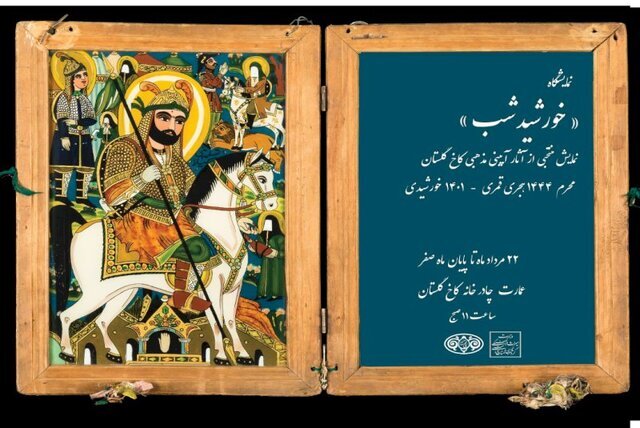INSUBCONTINENT EXCLUSIVE:
on display in an exhibition at the UNESCO-registered Golestan Palace in Tehran.Alam is a symbol of standards carried in Karbala, which is
be inaugurated on Saturday, the director of the World Heritage site Afarin Emami said on Thursday.The exhibit will showcase a selection of
60 ritual and religious works including two paintings by Mohammad Ghaffari (1848-1940), better known as Kamal al-Molk, teahouse paintings,
rare Quran manuscripts, and some objects related to tazieh, Iranian passion play, the official explained.The exhibit will run until
September 27, she added.In the year 680 CE on Ashura, the tenth day of the lunar month of Muharram, Imam Hussein (AS) and 72 of his loyal
companions were martyred in a battle against the forces of the oppressive Umayyad dynasty.A destination for domestic and international
travelers, Golestan Palace is located in the heart and historic core of Tehran
walled city.Following extensions and additions, it received its most characteristic features in the 19th century, when the palace complex
was selected as the royal residence and seat of power by the Qajar ruling family (1789-1925)
At present, the Golestan Palace complex consists of eight key palace structures mostly used as museums and the eponymous gardens, a green
shared center of the complex, surrounded by an outer wall with gates.The palace contains numerous ornaments dating from the 19th century,
which are one of its distinguishing features
Palace visitors are impressed by the palace's lavish decoration: paintings, murals, frescos, marble carvings, mirror mosaic, and stained
glass.Talar-e Salam, or the reception room, is perhaps the most famous hall in the palace and is where the kings welcomed foreign guests
Beautiful mirrorwork by Iranian masters decorates the ceilings and walls of this hall, and marble mosaics cover the floors.UNESCO has it
that the complex exemplifies architectural and artistic achievements of the Qajar era including the introduction of European motifs and

